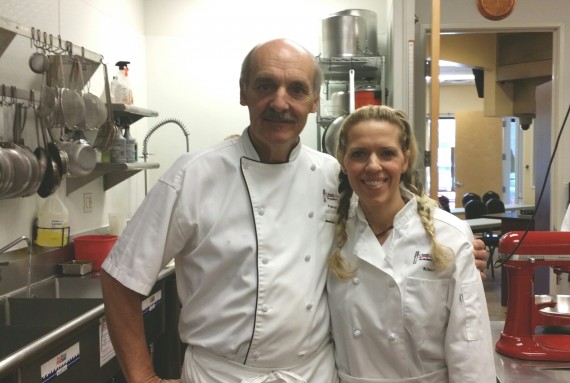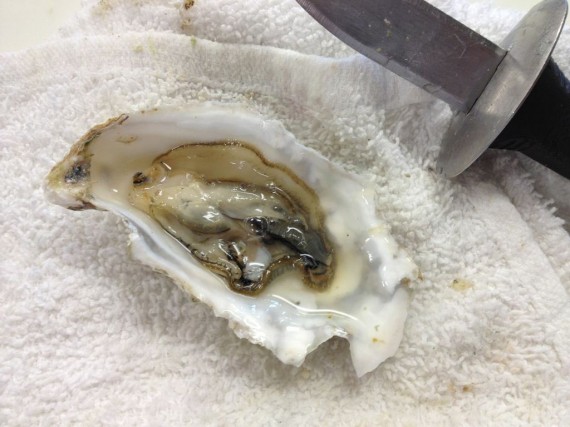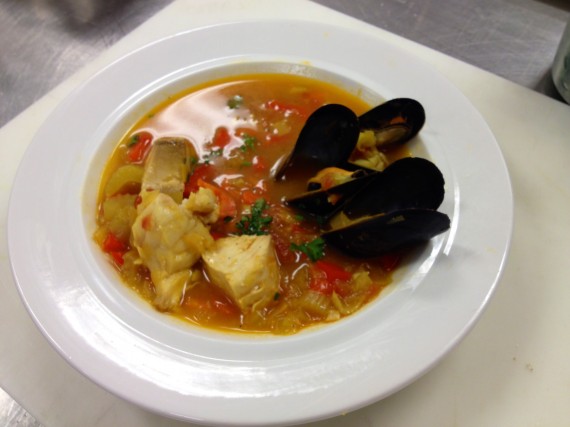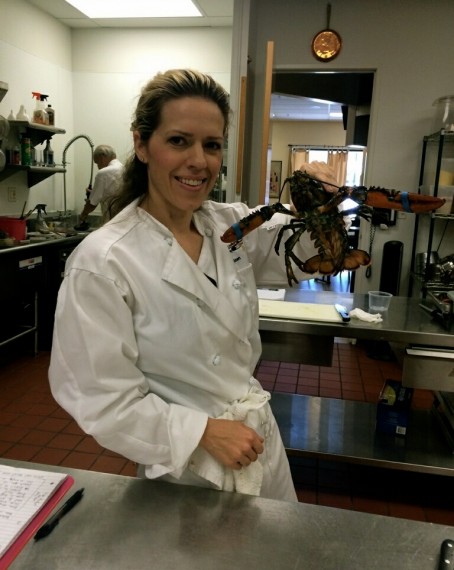
I’ve mentioned a few times that I recently took a 6-month course at a local cooking school to increase my skills in the kitchen. When I went from vegan to omni, I was feeling out of sorts in the kitchen. I ruined too many grass-fed steaks and wild-caught fish.
So, I talked mom into taking this course at Classic Cooking Academy.
It was amazing, fun, and worth every penny especially since I learned to shuck oysters! I don’t know about you, but watching that on YouTube is not as good as practicing in a class with a professional to guide you.

And, we learned to make things like this…

Oh, and cook lobster.
The lobster was scary and unsettling, but I put on my big girl pants and did it. It seemed like the right thing to do… if I was willing to eat lobster, then I should be able to cook it although that’s not for everyone, like mom. She went to pick up a lobster, it moved, which freaked her out, and she dropped it. Oh boy. (She was happy enough to eat the one I cooked though.)

I walked away with knowledge and confidence for the kitchen. Specifically, Mom and I took the Practical Series course, which is 24 weeks meeting one day a week, to learn solid fundamentals of classic cooking. This is something everyone should experience who wants to increase their skills in the kitchen, so if you’re local, check it out. We loved each class and we were sad when it ended.
We heard about the Practical Series while taking a free class there on bone broths, ghee, and traditional foods. We had so much fun learning from Chef Pascal that I went back that night for a wine pairing event, which was equally fun and educational. These first tastes from Chef Pascal sold me on taking the 6-month Practical Series course. I signed up that night and mom signed up shortly after me.
I’ve always had passion for food and cooking (probably inherited from my parents), but I felt a bit clumsy in the kitchen at times. And, there’s only so much you can glean from a cookbook, blogs, TV shows, and YouTube. Not to mention, you all know I’m keenly interested in learning life-long skills, and cooking is a solid one. As the magnet on my fridge reads, “Good cooks never lack friends.”
Well? Classic Cooking Academy offered the perfect opportunity to learn from a true pro (with an impressive resume) in a format that would ensure these useful skills are embedded deeply.
Chef Pascal was entertaining and his teaching goes beyond just cooking to sharing some history of foods as well. I can see why some people want to take the whole 6-month course over again because you know you’ll continue to learn and continue to be entertained. One of my favorite aspects about the course design was Chef Pascal’s point of view on nutrition and foods. Many people could benefit from this. Learn how to make impressive and delicious food while staying healthy, and guess what? It includes butter!
We covered everything from spending three weeks on eggs (they’re that important) to various animal proteins (lamb, beef, pork, fish, shellfish, veal, duck(!)), pastry, chocolate (learn how to temper it), stocks, sauces (this class alone is amazing not to mention all of the sauces you learn throughout the whole series), vegetables, soups, desserts, grains, sushi, and more.
If you can’t tell, I loved this experience and I look forward to taking some of the more advanced classes offered. With mom, of course.
(Here are some) Useful Tips I Learned at Classic Cooking Academy
Protein:
- Salt your steak or fish just before searing – I suppose this goes for poultry, too, but I recall him making a point of it with beef and fish. It’s good to make sure you’ve pat the protein dry with paper towel, too, to ensure a good crust from the sear (otherwise it could cause the protein to steam instead of getting a good sear). So… pat dry, season, and then sear.
- Make sure your skillet is hot(!). Once it’s in the pan, don’t touch it. Let it get its sear on, which for me is usually like this: FISH (1 to 2 minutes per side). BEEF (1 to 3 minutes per side, depending on the cut). CHICKEN (5 to 7 minutes for a whole bird, per side, and maybe 3 to 4 minutes for skin-on breasts). Just remember… the protein should easily come off the pan when it’s ready to flip with a spatula. If it’s stuck to the pan, let it cook longer. And, as chef likes to remind us, “Use your head and common sense. If you’re searing the protein and it looks like the pan is too hot, then lower the heat.” <– See? Common sense.
- Then, serve the protein or finish it in the oven using these temperatures: Red meats (375 degrees F). Fish/Pork (350 degrees F). Chicken (325 degrees F). Keep in mind that the time needed to finish cooking it depends on the thickness of the protein, too. I use an instant read thermometer. <– One of the best kitchen gadget investments I made.
- Rest beef or poultry about a 1/3 of cooking time. So, if it takes you 30 minutes to cook your meat, it should rest about 10 minutes. Not a totally hard and fast rule, but a nice guideline.
- Ummm duck is considered a red meat. I had no idea.
Mushrooms n Eggplant lovers? For the best results, use a very hot skillet before sautéing eggplant or mushrooms. These guys need that pan to be really(!) hot.
Sauces:
- Need to stretch a sauce because you don’t have enough? Whisk in a little grass-fed butter.
- Note: a sauce loses its strength once it’s added to food. So it might seem more intensely flavored or seasoned in the pan, but that can be ok. (My experience is the same with salad dressings.)
- Tomato sauce: always cook these for at least an hour, even if the sauce is from a jar, because of its acidity.
Sauté vs sweat? There’s a difference. To sauté uses a hotter skillet and browns the food quickly. To sweat the vegetables is cooking with a lower heat to draw moisture out and build flavors. There’s a very real difference and you will get different resulting flavors with each. For example, if you sauté onions to top a burger, they will get quickly browned and have intense onion flavor when you bite into them. If you sweat the onions instead, the flavor will be more mild (and enjoyable to me).
Season everything as you cook it. Some people call this cooking with love (or giving the food soul), and I agree. You give attention to everything your cooking by seasoning it as you go. For example: Did you start with sweating onions? Season them with sea salt (and pepper, if desired). Now, you’re ready to add carrots or celery? Season again when you put those in. Keep seasoning as you go.
Soups:
- Do you need a thickener for blended soups that you made with a watery vegetable like asparagus, zucchini, or spinach? Shred a bit of peeled raw potato in to thicken it.
- For green vegetable soups like broccoli, zucchini, and asparagus… cook those vegetables quickly to keep the soup vibrantly green.
- Leek is excellent to use for many soups.
- If using a teaspoon of curry powder, use it when sweating the leeks (or onion) to get more depth and soul in your soup. I like doing this when I make a roasted cauliflower and onion soup. I roast the veggies with ghee, sea salt, and turmeric and then I blend them with hot homemade bone broth. (Learn how to easily make your own bone broth here.)
Using cream? Remember that the higher the fat content, the more you can do with it such as whipping and it resisting curdling when added to hot soups and hot dishes. I prefer grass-fed whipping cream.
Eggs: For recipes needing eggs to be whipped… ALWAYS whip eggs that are room temperature – around 90 degrees F.
If you live in the valley, I can’t recommend this course enough. You will be glad you did (and so will your family!).